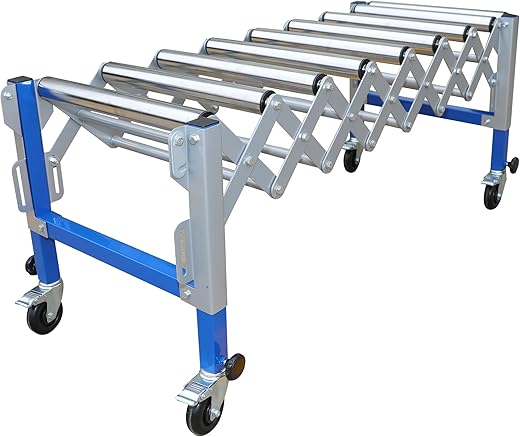









Understanding Telescopic Conveyors: A Comprehensive Guide
In the fast-paced world of logistics and warehousing, efficiency can make or break a business. Enter the telescopic conveyor, an ingenious solution that revolutionizes the way we handle materials. But what exactly is a telescopic conveyor, and why should you consider integrating one into your operations? Let’s delve into this topic, exploring the benefits, applications, and key features of these remarkable machines.
What is a Telescopic Conveyor?
A telescopic conveyor is a type of conveyor system that extends and retracts, providing flexibility for loading and unloading materials. Think of it as a modern-day version of the traditional conveyor belt, but with the added ability to adjust its length. This feature is particularly useful in environments where space is at a premium or where loading docks and trucks vary in height.
Imagine you’re at a busy warehouse. Workers are constantly moving boxes, pallets, and other goods. Without a telescopic conveyor, they would have to rely on forklifts or manual labor, which can be time-consuming and inefficient. However, with a telescopic conveyor, the process becomes seamless. The conveyor extends directly into the truck, allowing for easy transfer of goods without the need for additional equipment.
Why Choose a Telescopic Conveyor?
When considering whether to invest in a telescopic conveyor, it’s essential to weigh the benefits. Here are some compelling reasons to consider:
1. Enhanced Efficiency
Time is money, and in logistics, every second counts. Telescopic conveyors allow for rapid loading and unloading, significantly reducing turnaround times. Imagine a busy loading dock where every minute saved translates into more shipments processed and satisfied customers.
2. Space Optimization
In many warehouses, space constraints can hinder operations. Telescopic conveyors can be adjusted to fit the exact needs of your workspace. When not in use, they can be retracted, freeing up valuable floor space. This adaptability is akin to a Swiss Army knife—compact yet versatile.
3. Improved Safety
Safety should always be a priority in any work environment. Telescopic conveyors minimize the risk of injury by reducing the need for manual lifting and repetitive motions. By allowing workers to load and unload goods from a safe distance, these conveyors create a safer workplace.
Applications of Telescopic Conveyors
Telescopic conveyors are not just a one-trick pony; they find utility across various industries. Here are a few notable applications:
1. Warehousing and Distribution
In warehouses, telescopic conveyors streamline the process of moving products from storage to shipping areas. They can easily extend into delivery trucks, making the transfer of goods efficient and hassle-free.
2. Manufacturing
In manufacturing plants, these conveyors assist in the assembly line process, moving materials from one station to another. Their adjustability allows for a smoother workflow, minimizing delays.
3. Retail and E-commerce
With the rise of e-commerce, retailers are looking for ways to optimize their logistics. Telescopic conveyors can facilitate the quick handling of online orders, ensuring that products reach customers faster than ever.
Key Features to Look For
When selecting a telescopic conveyor, it’s crucial to consider several key features:
1. Length and Extension Range
Ensure that the conveyor can extend to meet your specific needs. The right length will depend on your loading docks and the types of vehicles you use.
2. Weight Capacity
Different conveyors come with varying weight capacities. Be sure to choose one that can handle the loads you typically transport.
3. Portability
If you need to move the conveyor around your facility, look for models with wheels or other mobility features to facilitate easy relocation.
Conclusion
In conclusion, telescopic conveyors offer a multitude of benefits that can enhance efficiency, optimize space, and improve safety in various industries. By understanding their features and applications, you can make an informed decision about integrating this technology into your operations. Are you ready to revolutionize your logistics with a telescopic conveyor? The choice is yours!
FAQs
1. How much weight can a telescopic conveyor handle?
The weight capacity of telescopic conveyors varies by model, but many can handle loads anywhere from a few hundred pounds to several tons. Always check the specifications before purchase.
2. Can telescopic conveyors be used outdoors?
Yes, some telescopic conveyors are designed for outdoor use. However, it’s essential to choose a model that is weather-resistant to ensure durability.
3. How do I maintain a telescopic conveyor?
Regular maintenance includes checking for wear and tear, lubricating moving parts, and ensuring that all components are functioning correctly. It’s advisable to follow the manufacturer’s maintenance guidelines for optimal performance.
